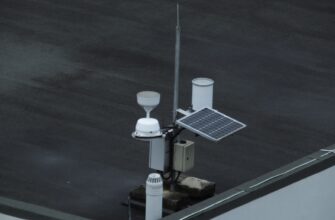- Unlock Maximum Returns: Farming DOT via Rocket Pool for Best APY
- Why Farm DOT with Rocket Pool?
- Step-by-Step: Farming DOT with Rocket Pool for Best APY
- Top Platforms for Maximizing DOT Farming APY
- Critical Risks & Mitigation Strategies
- Pro Tips for Sustained High APY
- FAQ: Farming DOT on Rocket Pool
- Final Thoughts: Is This Strategy Worth It?
Unlock Maximum Returns: Farming DOT via Rocket Pool for Best APY
Seeking the best APY for Polkadot (DOT) through Rocket Pool? While Rocket Pool specializes in Ethereum liquid staking, savvy DeFi users leverage its rETH token to farm DOT at exceptional yields. This guide reveals how to combine Rocket Pool’s infrastructure with Polkadot’s ecosystem to optimize returns, covering strategies, platforms, and risk management for peak performance.
Why Farm DOT with Rocket Pool?
Rocket Pool’s rETH (a liquid staking derivative for ETH) serves as a powerhouse asset in decentralized finance. Pairing rETH with DOT creates unique opportunities:
- Enhanced Liquidity: rETH’s deep liquidity pairs efficiently with DOT on DEXs
- Dual Rewards: Earn trading fees + additional farming incentives
- Capital Efficiency: Compound ETH staking rewards with DOT yield farming
- Ecosystem Synergy: Leverage Ethereum’s security with Polkadot’s interoperability
Step-by-Step: Farming DOT with Rocket Pool for Best APY
- Acquire rETH: Stake ETH via Rocket Pool to receive rETH (earning ~3-4% ETH staking rewards)
- Bridge DOT to Ethereum: Use cross-chain bridges like Moonbeam or Axelar to transfer DOT to ERC-20 format
- Provide Liquidity: On Uniswap V3 or Balancer, create a rETH/DOT liquidity pool
- Stake LP Tokens: Deposit LP tokens into yield farms like Beefy Finance or Aura Finance
- Optimize & Compound: Use auto-compounders to reinvest rewards for exponential growth
Top Platforms for Maximizing DOT Farming APY
These DeFi hubs offer the best rETH/DOT farming APY (rates vary weekly):
- Beefy Finance: Auto-compounding vaults with APY up to 15-25%
- Balancer + Aura: Boosted pools with BAL/AURA incentives (APY: 12-20%)
- Uniswap V3 Concentrated Liquidity: Active management for up to 30% APY (requires position tuning)
- Yearn Finance: Automated strategy vaults combining yield sources
Critical Risks & Mitigation Strategies
- Impermanent Loss (IL): Hedge with correlated assets or use narrow price ranges
- Smart Contract Risk: Audit platforms via CertiK or DeFiSafety before depositing
- APY Volatility: Monitor reward token prices (e.g., BAL, AURA)
- Bridge Vulnerabilities: Use insured bridges like Socket for DOT transfers
Pro Tips for Sustained High APY
- Reinvest rewards during DOT price dips for bonus compounding
- Diversify across 2-3 farms to mitigate platform-specific risks
- Track gas fees – batch transactions during low-activity periods
- Use DeFiLlama’s APY comparison tool weekly for rate optimization
FAQ: Farming DOT on Rocket Pool
Q: Can I farm native DOT directly on Rocket Pool?
A: No. Rocket Pool is Ethereum-native. DOT must be bridged to Ethereum as ERC-20 token for farming with rETH.
Q: What’s the realistic APY range for rETH/DOT farms?
A: Typically 12-30% depending on platform incentives, DOT price volatility, and trading volume. Monitor real-time dashboards for updates.
Q: How often should I compound farming rewards?
A: Auto-compounders (like Beefy) optimize daily. Manual compounding every 7-14 days balances gas costs vs returns.
Q: Is impermanent loss worse with rETH/DOT pairs?
A: Yes – ETH and DOT have low correlation. Limit exposure to 10-15% of your portfolio and use concentrated liquidity ranges.
Q: Which wallet works best for this strategy?
A: MetaMask with WalletConnect. Always verify contract addresses via official project links.
Final Thoughts: Is This Strategy Worth It?
Farming DOT via Rocket Pool’s rETH delivers superior APY for experienced DeFi users comfortable with cross-chain operations and IL management. While requiring active monitoring, the 15-30% APY potential significantly outperforms traditional DOT staking (≈12%). Always start small, use trusted platforms, and never risk more than you can afford to lose. As Rocket Pool and Polkadot ecosystems evolve, this synergy may unlock even greater yield opportunities.








